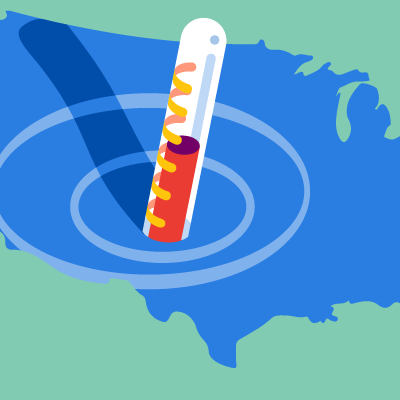
A year ago, in August 2017, Hurricane Harvey dumped some 30 trillion gallons of water over the Houston, Texas, area; unable to drain away or soak in quickly enough, floodwaters inundated the city. Earlier this month the Harris County Flood Control District released the list of mitigation projects that would be funded by the county's USD 2.5 billion flood infrastructure bond proposal. Are such large-scale mitigation measures worthwhile investments? Experience is increasingly demonstrating that the answer to that question is “yes.”
Let’s look at the example of the City of Fort Collins, a mid-sized college town by the foothills of the Rocky Mountains in Colorado. I was living there when a major flood struck in 1997, inundating homes and businesses. The flash flooding of Spring Creek killed five people and injured 54, while causing hundreds of millions of dollars in property damage—more than USD 100 million in reported damage to the Colorado State University campus alone.
The atmospheric conditions leading to the 1997 Fort Collins flood were so unusual that experts later detailed them in an academic paper. On July 27, 1997, a series of smaller storms saturated the ground on the west side of town in the foothills. The next day, moist tropical air streaming from the south met a strong cold front coming out of the north, producing storm cells that moved along the foothills, acting like a monsoon. Up to 14.5 inches of rain fell during a 30-hour period on the city’s west side, including one period of 90 minutes when about 6 inches fell, while the east side of the city saw just 2-3 inches of total rainfall.
In the middle of the deluge, people were seen kayaking down main streets that had turned into whitewater rapids up to 4 feet deep. Elsewhere, rescue teams worked through the night to get to people trapped in their homes or vehicles, caught unaware by the floodwaters.
The next day dawned to a sober awareness of casualties, 200 homes lost, extensive damage to 1,500 homes and businesses, parts of the campus underwater, cars washed away, and a business-destroying gas explosion caused by a derailed freight train with washed-out tracks. Major parts of the campus were underwater, including half of the Colorado State University (CSU) library collection that had been temporarily stored in a lower level during a renovation project. The cleanup and recovery would take months.
Even local meteorologists from CSU’s Atmospheric Science program were unprepared for this intense and highly localized weather event. These scientists ended up enlisting citizen observers at more than 300 locations in and around Fort Collins to gather rain reports on the event. This unprecedented effort eventually led to the launch of The Community Collaborative Rain, Hail, and Snow Network (CoCoRaHS), an international weather-watching group.
While the damage from this flood was substantial, it could have been worse. Fort Collins is in the floodplain of several creeks and the Cache la Poudre River, which have flooded notably several times. Because of these events, in the late 1980s and early 1990s the city invested USD 5 million in flood mitigation measures. Thanks to these earlier measures, officials estimated a direct savings of USD 2.7 million to 5.5 million for the 1997 flood event alone.
After this flood, planners from the City of Fort Collins and CSU chose to invest millions more in flood mitigation measures. They took the opportunity to re-examine the area’s flood potential and to identify additional areas at risk. Subsequently, Fort Collins became the first community in the country to be awarded a FEMA Pre-Disaster Mitigation construction grant. The city and campus reworked their stormwater management systems, made drainage improvements, expanded ways to safely divert and hold floodwaters, and preserved and restored open spaces in the floodplain. Along with these infrastructure improvements, the city implemented new building standards and floodplain regulations.
The flood mitigation plan paid off in 2013 after another massive storm event: some areas of the city received nearly a foot of rain with record-breaking floods, yet overall sustained minimal damage. The U.S. Climate Resilience Toolkit uses this flood and the successful mitigation measures as a case study of best practices. Fort Collins is now classified as a Class 2 Community under the FEMA Community Rating System—one of only five in the nation with that rating or higher.
Inland Flood Megadisaster in the United States—Are You Prepared?



